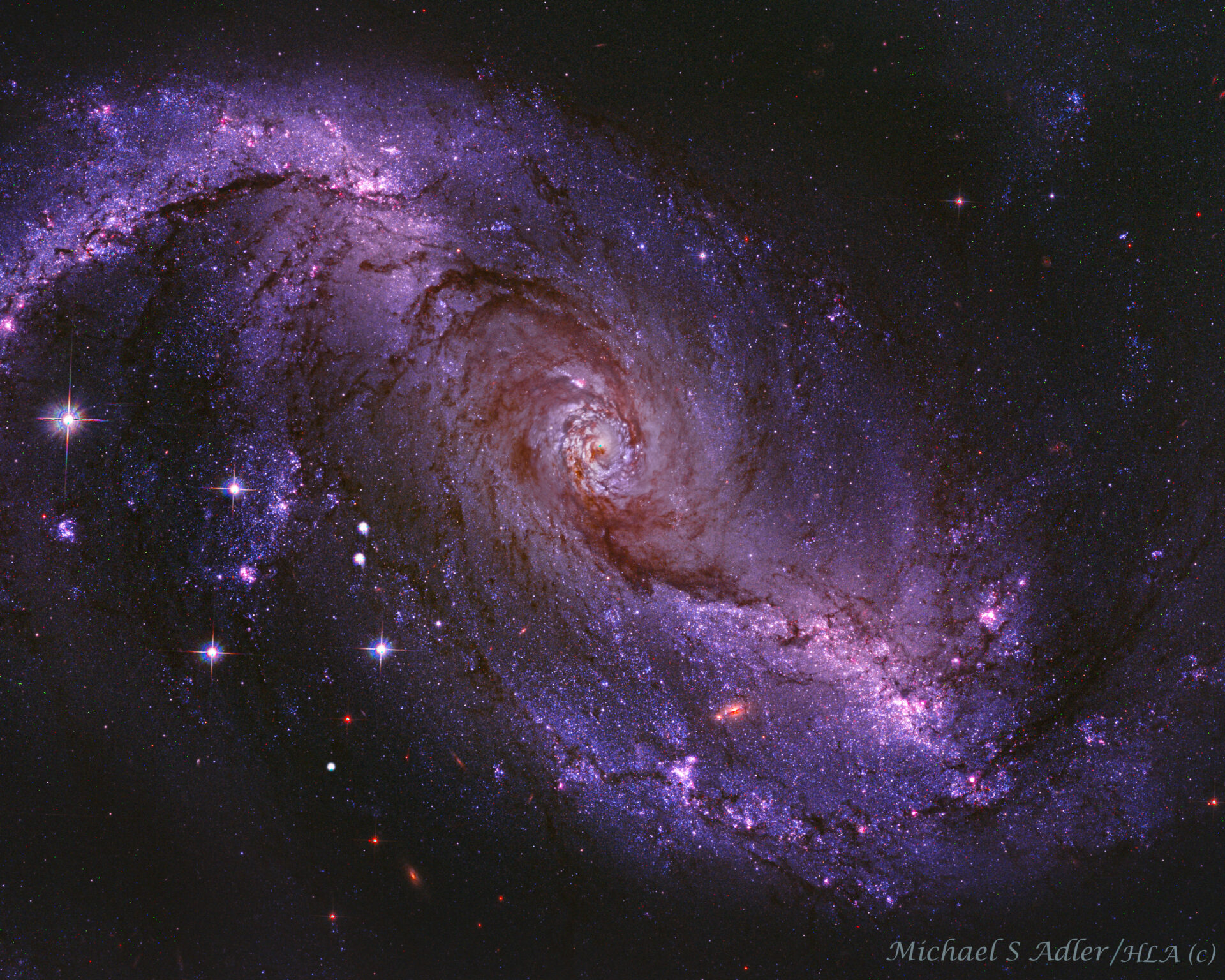Optics: Hubble Tellecope
Mount: Hubble Telescope
Camera: Advanced Camera for Surveys
Filters: 435nm (B), 550nm(G), 814nm(R), & 658nm narrowband (Halpha+[N II])
Dates/Times: August 2005
Location: Earth orbit
Exposure: 2.7 hours
Acquisition:Downloaded raw FITS images for each filter from the Hubble Legacy Archive
Processing: Stretching done for each in MaximDl using Digital Development filter, created RGB image in PS2022. Color balance, brightening, sharpening, noise reduction were done in PS2022.
NGC 1672, Hubble Space Telescope(Cropped)
Original price was: $65.00.$52.50Current price is: $52.50.
NGC 1672 : Many spiral galaxies have bars across their centers. Even our own Milky Way Galaxy is thought to have a modest central bar. Prominently barred spiral galaxy NGC 1672 was captured in spectacular detail in an image taken by the orbiting Hubble telescope. Visible are dark filamentary dust lanes, clusters of bright blue stars, red emission nebulas of glowing hydrogen gas, a long bright bar of stars across the center, and a bright active nucleus that likely houses a supermassive black hole. As a prototypical barred spiral galaxy, NGC 1672 differs from normal spiral galaxies, in that the arms do not twist all the way into the center. Instead, they are attached to the two ends of a straight bar of stars enclosing the nucleus. Viewed nearly face on, NGC 1672 shows intense star formation regions especially off in the ends of its central bar. Astronomers believe that barred spirals have a unique mechanism that channels gas from the disk inward towards the nucleus. This allows the bar portion of the galaxy to serve as an area of new star generation. NGC 1672 is also classified as a Seyfert galaxy. Seyferts are a subset of galaxies with active nuclei. The energy output of these nuclei can sometimes outshine their host galaxies. This activity is powered by accretion onto supermassive black holes.Light takes about 60 million years to reach us from NGC 1672, which spans about 75,000 light years across in the constellation of the Dolphinfish (Dorado). The raw data for this image was taken by the Hubble telescope in August 2005 and the processing was done by Michael Adler in 2021. This is a true color image with the color resulting from assigning different hues (colors) to each monochromatic image taken through various filters. In this case, the assigned colors are: Blue: from a 435nm broadband filter, Green: 550nm filter, Red: 814nm filter, and red highlights from Hydrogen and Nitrogen emission from a narrowband 658nm filter.
This image is a cropped version showing the extreme detail in the galaxy. It is interesting to see what appears to be embedded small galaxies which are actually much further away and just happen to be able to be seen through the NGC 1672.


